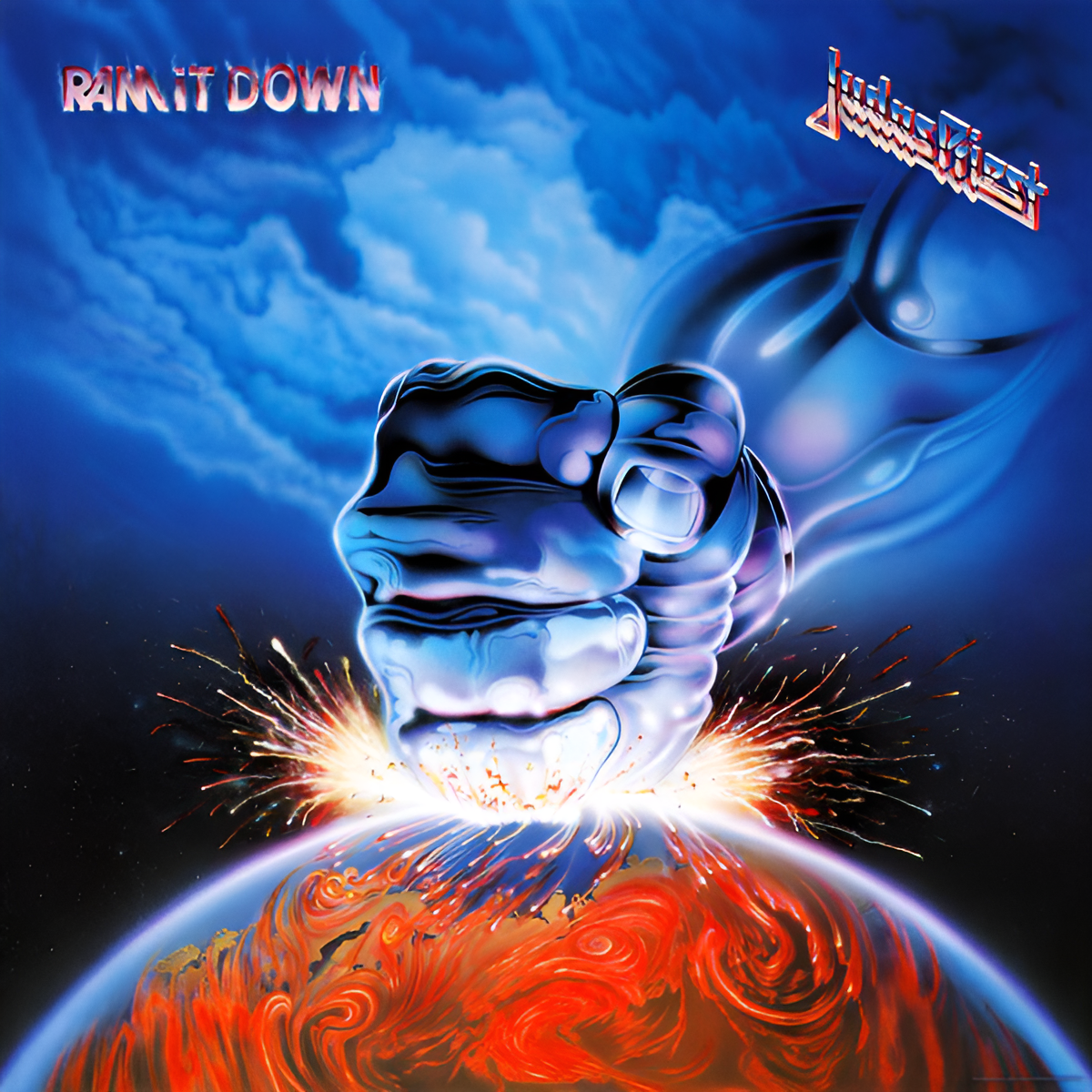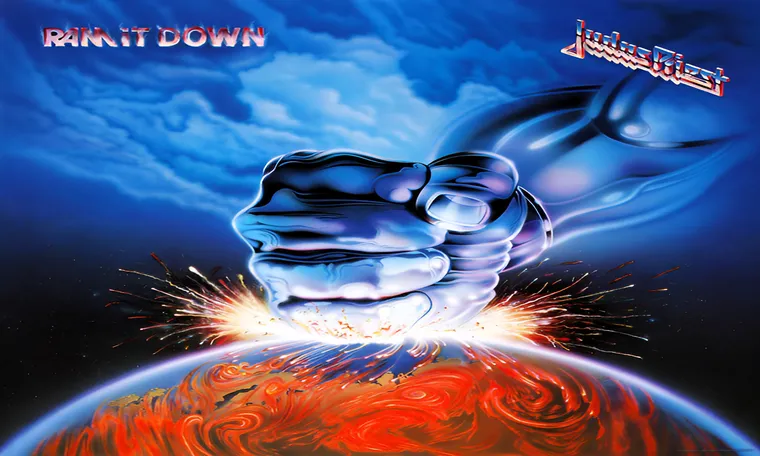
By the time Ram It Down arrived in 1988, heavy metal was in a strange state of flux. The traditional metal titans were either doubling down on speed or cautiously testing radio waters, while the glam scene dominated MTV and thrash was boiling over into the mainstream. Judas Priest, never content to be mere spectators, found themselves at a crossroads. Their previous album, Turbo, had leaned heavily into synths and a glossy, commercial aesthetic that alienated some long-time fans—even as it won them new ones.
With Ram It Down, Priest didn’t backpedal. Instead, they hit the accelerator. The result is a record that feels like a defiant, high-voltage exorcism of compromise. It's a metal album that reclaims its grit without entirely abandoning the experimentation of the ‘80s. If Turbo was Judas Priest’s neon dream, then Ram It Down is the cold steel hangover—faster, louder, and unapologetically Priest.
Guitars as Artillery: The Precision of Power
The album kicks off with its title track, “Ram It Down,” and it’s instantly clear that any softness from Turbo has been incinerated. Glenn Tipton and K.K. Downing deliver riffs that don’t just gallop—they explode. The song feels like a mission statement: ferocious double bass, shrieking solos, and Rob Halford’s voice in full battle mode. There’s no subtlety here—only scorched earth.
Tracks like “Heavy Metal” and “Hard as Iron” channel the band’s classic power but supercharge it with speed metal intensity. Dave Holland’s drumming—though basic compared to the rising technical bar of the time—provides a thunderous backbone, and the guitar duo carve riffs like blades through chrome. Solos are fast, fiery, and surgical, showing that Tipton and Downing were still very much at the top of their game.
Even more experimental moments like the cover of Chuck Berry’s “Johnny B. Goode” are played with such over-the-top force that they fit the record’s all-in energy. It’s a bizarre choice, sure, but delivered with a knowing smirk and a turbocharged engine behind it.
Cyber Steel and Fire: Themes of Defiance and Power
Lyrically, Ram It Down is steeped in anthemic declarations and futurist imagery. While it doesn’t dive into the dystopian or darkly poetic depths of Painkiller (which would follow), it taps into a different kind of power fantasy—one forged in steel, leather, and speed. “Blood Red Skies” is the standout here: a sweeping, dramatic power ballad that channels cold isolation and righteous vengeance. Halford sounds like he’s broadcasting from the edge of the world, and it’s one of the few moments on the album where emotion overtakes energy.
Elsewhere, it’s all about the charge. “Come and Get It,” “Monsters of Rock,” and “Love You to Death” are odes to metal, rebellion, and excess. They may not be the most lyrically complex tracks Priest ever penned, but their delivery is what sells them. Halford’s vocal control is in peak form—switching from banshee shriek to operatic power with the flick of a switch.
Ram It Down may not offer deep philosophical reflection, but it never promises to. This is metal as statement—bold, loud, and laser-focused on domination.
Forged in the Machine: The Sound of Transition
The production on Ram It Down, handled by longtime collaborator Tom Allom, is glossy but punishing. The guitars are razor-sharp, layered with digital sheen, and the drums—reportedly augmented with early drum machine technology—have a mechanical, almost industrial snap. While some fans at the time criticized this clinical sound, in retrospect it gives the album a strange, fascinating edge. It’s not analog thunder—it's chrome precision.
Tipton’s guitar tone is especially fierce here, cutting through the mix with digital clarity, while Downing adds depth and aggression. Halford’s vocals are given the space to dominate the soundscape, and dominate they do. On songs like “I’m a Rocker” and “Hard as Iron,” his presence is electrifying, even over the album’s more synthetic base.
This slickness would be stripped away for the raw, aggressive tone of Painkiller, but here it works in its own unique way—less organic, more engineered, like a war machine at full throttle.
End of an Era: Ram It Down as a Transitional Titan
Looking back, Ram It Down stands at a pivotal moment in Judas Priest’s career. It’s both a farewell and a beginning—the final album with Dave Holland on drums and the last gasp of the band’s glam-tinged '80s experimentation. At the same time, it hints at the speed and fury that would define their legendary return with Painkiller two years later.
Though Ram It Down was met with mixed reviews upon release—some fans still reeling from Turbo, others unready for its cyber-metal sheen—its legacy has improved with time. It’s the sound of a band firing on all cylinders, refusing to fade out quietly. It might not be Priest’s most iconic work, but it’s one of their most electrified.
This is an album that doesn’t beg for understanding—it demands your surrender. And by the final notes of “Blood Red Skies,” it’s already too late. You’ve been rammed down, chewed up, and spit out by the machine.
Standout Tracks:
Ram It Down
Blood Red Skies
Hard as Iron
Heavy Metal
Come and Get It
Judas Priest didn’t just survive the '80s—they throttled it. With Ram It Down, they proved that speed, strength, and sheer conviction still ruled the metal kingdom—and they weren’t handing over the crown anytime soon.

